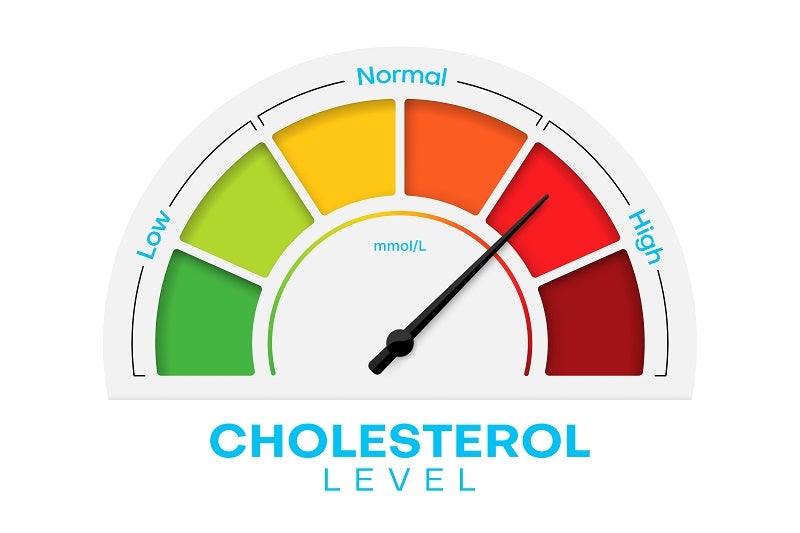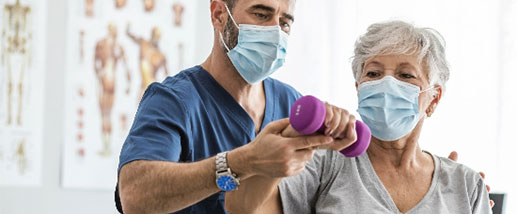Top 5 Myths About Cholesterol
June 30, 2024
Categories: Cardiovascular Health, Health & Wellness, Men's Health, Women's Health
Tags: Heart Care
David Doud, DO debunks common myths about cholesterol and what you can do to achieve healthy levels.
Myth #1: You should aim to get your cholesterol as low as possible.
Fact: Not all cholesterol is bad. Your body needs some cholesterol for essential functions. With cholesterol, the name of the game is balance — not always the lowest possible score.
There are two main types of cholesterol: high-density lipoprotein (HDL) and low-density lipoprotein (LDL). HDL cholesterol is “good” cholesterol because it absorbs cholesterol in your blood and takes it to your liver. LDL, on the other hand, builds up in your arteries (the blood vessels that supply blood to your heart), raising your risk of heart disease or stroke. When doctors talk about lowering your cholesterol, they usually want to see a lower LDL.
There’s no single cholesterol score that’s right for everyone. But in general, you should aim for an HDL of at least 40 mg/dL. An ideal LDL level is less than 100 mg/dL, but up to 129 may be more realistic for some people. Your provider can help you set goals that fit your unique health needs.
Myth #2: Triglycerides and cholesterol are separate issues.
Fact: Triglycerides and cholesterol aren’t the same thing, but they are related. Both are fatty substances that circulate in your blood. Cholesterol helps make hormones and cells, while triglycerides give you energy.
Triglycerides don’t build up on your blood vessel walls like LDL cholesterol. Instead, high triglycerides can cause pancreatitis (inflammation of the pancreas) and atherosclerosis (hardening and thickening of your arteries). Atherosclerosis can also raise your risk of a heart attack or stroke. Together, your triglyceride and cholesterol levels paint a picture of your overall risk of heart disease and stroke.
Myth #3: If you follow a healthy lifestyle, you don’t need cholesterol-lowering medication.
Fact: Many people can maintain healthy cholesterol levels with diet, exercise and not smoking. But if you have familial hypercholesterolemia (FH), these habits likely won’t be enough.
People with FH have a gene mutation that interferes with their liver’s ability to clean excess cholesterol out of the body. Despite the changes they make to their lifestyle, their cholesterol may be higher than it should be. Taking cholesterol-lowering medications and getting frequent cholesterol checks can help people with FH maintain good heart health.
Whether you need medications or not, keep working toward a healthy diet and more physical activity. These habits don’t just help lower cholesterol - they also help prevent other serious conditions like cancer and Type 2 diabetes.
Myth #4: Sugar doesn’t affect your cholesterol.
Fact: Consuming a high-sugar diet can significantly raise cholesterol and triglyceride levels. Your body can take the sugar you consume and turn it into fat, which becomes LDL cholesterol or triglycerides. Even vegetarians and vegans could have unhealthy cholesterol and triglyceride levels if they eat a lot of sugar or processed foods.
And it’s not just about what’s on your plate. High-sugar drinks like soda, juice and sports drinks are common sources of excess sugar in the diet.
Myth #5: You have to take statins if your cholesterol is high.
Fact: Statins are a well-studied, safe and effective medication for high cholesterol, but they’re not the only option. If statins haven’t worked well for you, newer medications could be the solution.
Deciding whether you need medication — and which one you need — may take some extra detective work. If your provider needs more information about your heart health, they may recommend a coronary artery calcium (CAC) test. This test uses detailed CT images to look for hardened (calcified) plaque in your arteries. The amount of calcified plaque present can help identify heart disease and determine your heart attack or stroke risk.
Not everyone needs a CAC test, and not all insurance plans cover it. But for some people, this test can help you and your provider make important treatment decisions. Experts in Trinity Health Michigan’s Radiology Centers offer CAC imaging, so it’s easy to find a testing location near your home or work.
The first step: Get a cholesterol check
If you don’t know your cholesterol levels, it’s easy to get started. Your primary care provider (PCP) can order a lipid panel blood test, which measures your cholesterol and triglycerides. Everyone over age 40 should get regular cholesterol checks. Your PCP can talk with you about how often you need a lipid panel based on your family history, age and personal risk factors for heart disease.
Your PCP is your advocate who wants you to live the healthiest life possible. If you don’t have a PCP, we can help. Trinity Health providers see patients across Southeast and West Michigan so you can receive exceptional care close to home. Find a Trinity Health PCP today.




